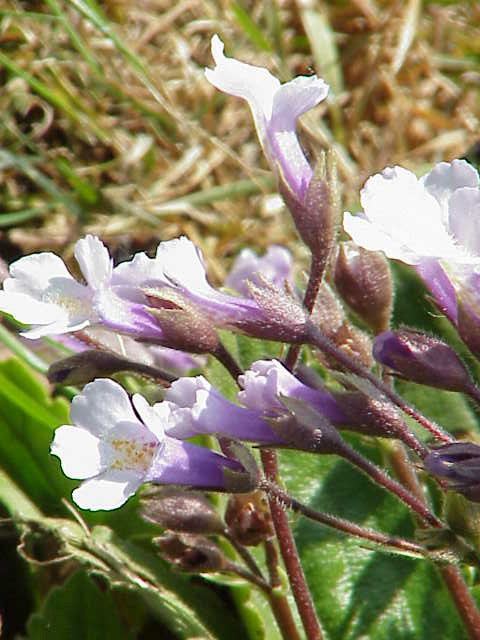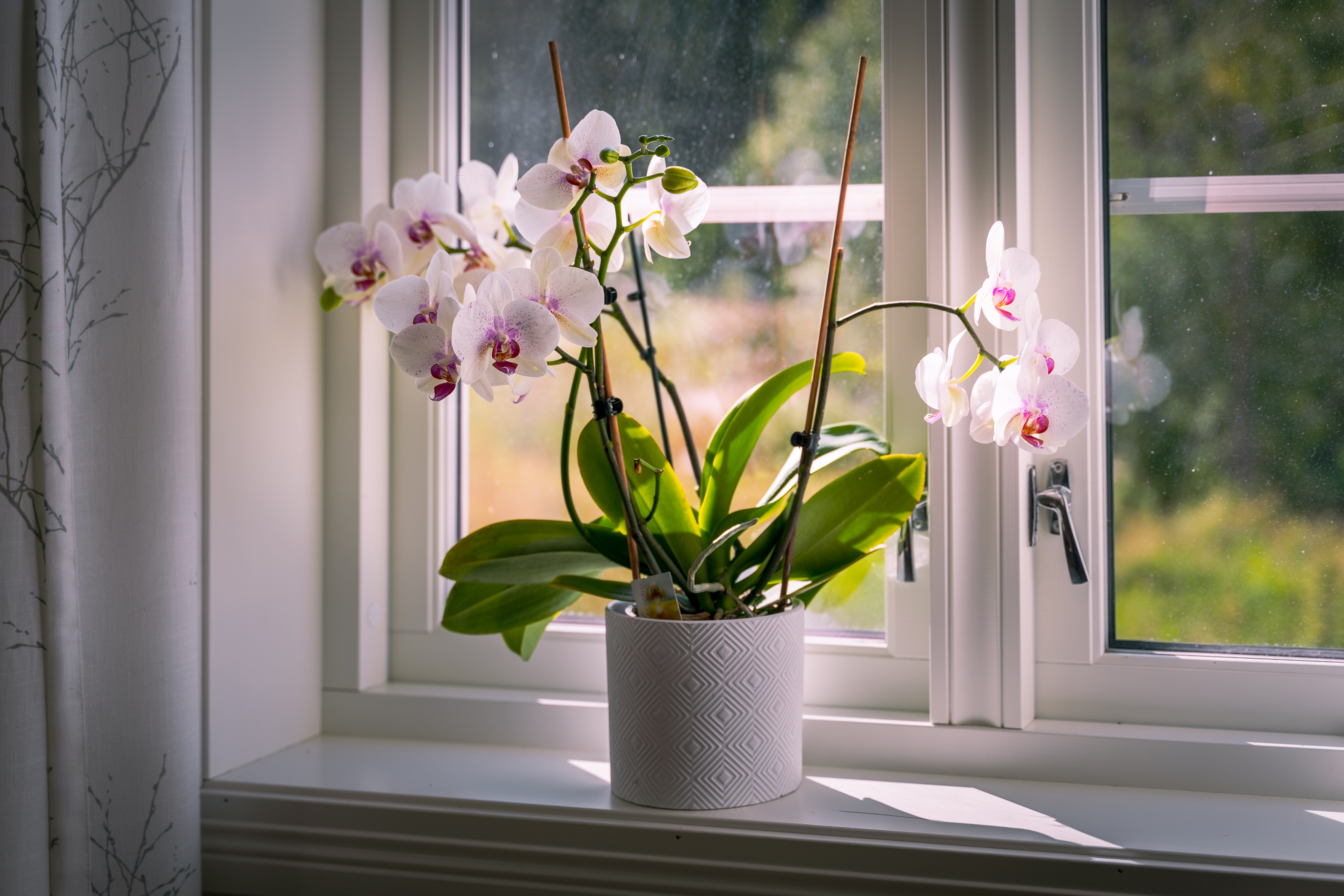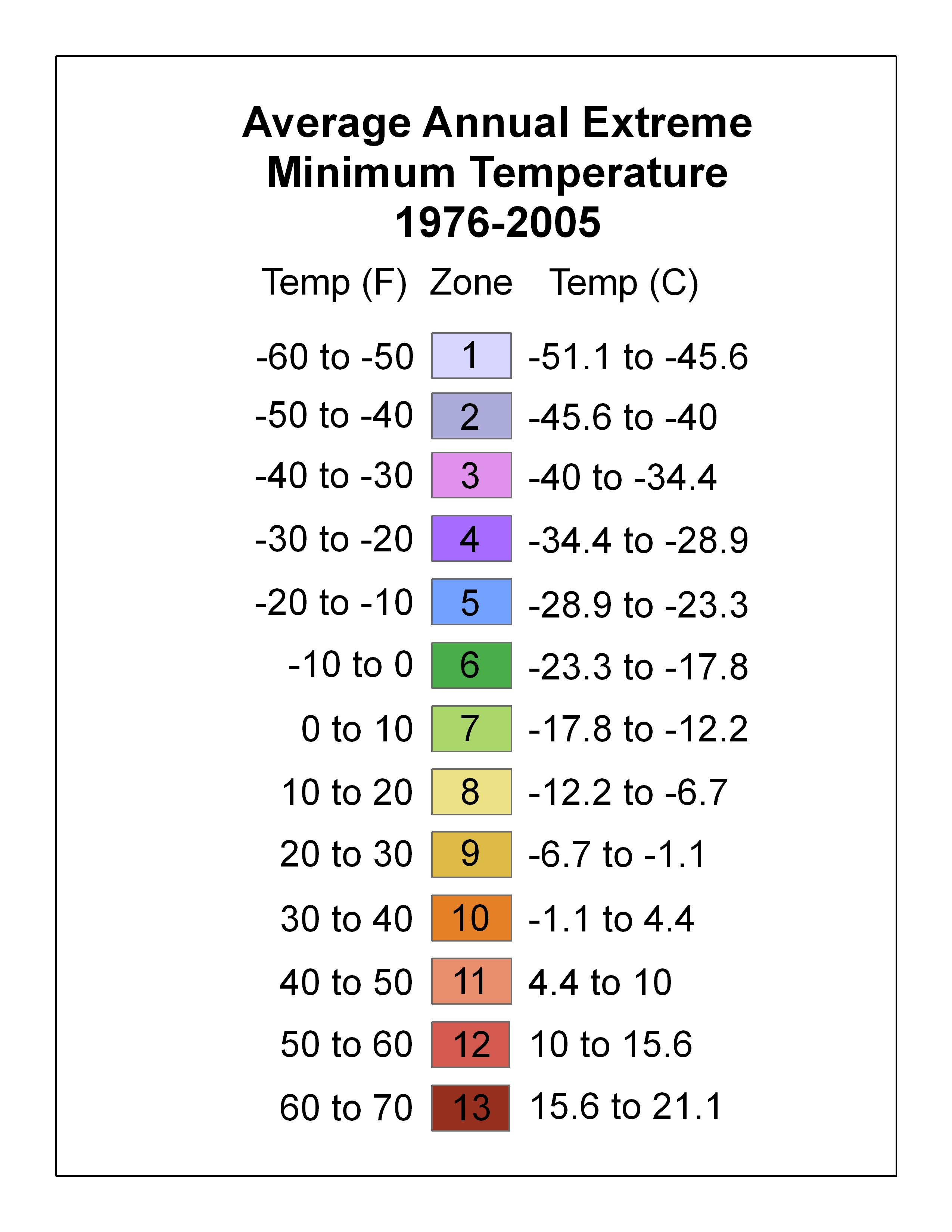|
Sinningia Speciosa
''Sinningia speciosa'', sometimes known in the horticultural trade as gloxinia, is a Tuber, tuberous member of the flowering plant native to Brazil within the family Gesneriaceae. Originally included in the genus ''Gloxinia (genus), Gloxinia'' in 1817, it was reclassified to ''Sinningia''. Showy ''S. speciosa'' hybrids are still sometimes referred to simply as "gloxinia", although this name is now technically incorrect. The name florist's gloxinia is now sometimes used to distinguish it from the Rhizome, rhizomatous species now included in the genus ''Gloxinia (genus), Gloxinia''. Another common name is Brazilian gloxinia. The plants produce large, velvety, brightly colored flowers and are popular Houseplant, houseplants. Cultural requirements are similar to those of Streptocarpus sect. Saintpaulia, African violets except that ''S. speciosa'' generally requires more light and often has a Dormancy, dormant period, when the tuber should be kept cool and dry until it resprouts. Cul ... [...More Info...] [...Related Items...] OR: [Wikipedia] [Google] [Baidu] |
Henri Ernest Baillon
Henri Ernest Baillon (; 30 November 1827 in Calais – 19 July 1895 in Paris) was a French botanist and physician. Baillon spent his academic career teaching natural history and publishing numerous works on botany. He was appointed to the Légion d'honneur in 1867, joined the Royal Society in 1894 and put together the ''Dictionnaire de botanique'' with Auguste Faguet's wood engravings. by Umberto Quattrocchi Select works * ''Étude générale du groupe des Euphorbiacées'' (1858) * ''Monographie des Buxacées et des Stylocérée'' (1859) * ''Recherches organogéniques sur la fleur femelle des Conifères'' (1860) * ''Recherches sur l’organisation, le développement et l’anatomie des Caprifoliacées'' (1864 ...[...More Info...] [...Related Items...] OR: [Wikipedia] [Google] [Baidu] |
Tuber
Tubers are a type of enlarged structure that plants use as storage organs for nutrients, derived from stems or roots. Tubers help plants perennate (survive winter or dry months), provide energy and nutrients, and are a means of asexual reproduction. Stem tubers manifest as thickened rhizomes (underground stems) or stolons (horizontal connections between organisms); examples include the potato and Yam (vegetable), yam. The term ''root tuber'' describes modified lateral roots, as in sweet potatoes, cassava, and dahlias. Terminology The term originates from the Latin , meaning 'lump, bump, or swelling'. Some writers limit the definition of ''tuber'' to structures derived from Plant stem, stems, while others also apply the term to structures derived from roots., p. 124 Stem tubers A stem tuber forms from thickened rhizomes or stolons. The top sides of the tuber produce shoots that grow into typical stems and leaves and the undersides produce roots. They tend to form at the s ... [...More Info...] [...Related Items...] OR: [Wikipedia] [Google] [Baidu] |
Flowering Plant
Flowering plants are plants that bear flowers and fruits, and form the clade Angiospermae (). The term angiosperm is derived from the Ancient Greek, Greek words (; 'container, vessel') and (; 'seed'), meaning that the seeds are enclosed within a fruit. The group was formerly called Magnoliophyta. Angiosperms are by far the most diverse group of Embryophyte, land plants with 64 Order (biology), orders, 416 Family (biology), families, approximately 13,000 known Genus, genera and 300,000 known species. They include all forbs (flowering plants without a woody Plant stem, stem), grasses and grass-like plants, a vast majority of broad-leaved trees, shrubs and vines, and most aquatic plants. Angiosperms are distinguished from the other major seed plant clade, the gymnosperms, by having flowers, xylem consisting of vessel elements instead of tracheids, endosperm within their seeds, and fruits that completely envelop the seeds. The ancestors of flowering plants diverged from the commo ... [...More Info...] [...Related Items...] OR: [Wikipedia] [Google] [Baidu] |
Brazil
Brazil, officially the Federative Republic of Brazil, is the largest country in South America. It is the world's List of countries and dependencies by area, fifth-largest country by area and the List of countries and dependencies by population, seventh-largest by population, with over 212 million people. The country is a federation composed of 26 Federative units of Brazil, states and a Federal District (Brazil), Federal District, which hosts the capital, Brasília. List of cities in Brazil by population, Its most populous city is São Paulo, followed by Rio de Janeiro. Brazil has the most Portuguese-speaking countries, Portuguese speakers in the world and is the only country in the Americas where Portuguese language, Portuguese is an Portuguese-speaking world, official language. Bounded by the Atlantic Ocean on the east, Brazil has a Coastline of Brazil, coastline of . Covering roughly half of South America's land area, it Borders of Brazil, borders all other countries and ter ... [...More Info...] [...Related Items...] OR: [Wikipedia] [Google] [Baidu] |
Gesneriaceae
Gesneriaceae, the gesneriad family, is a family (biology), family of flowering plants consisting of about 152 genera and ca. 3,540 species in the tropics and subtropics of the Old World (almost all Didymocarpoideae) and the New World (most Gesnerioideae), with a very small number extending to temperate areas. Many species have colorful and showy flowers and are cultivated as ornamental plants. Etymology The family name is based on the genus ''Gesneria'', which honours Switzerland, Swiss naturalist and humanism, humanist Conrad Gessner. Description Most species are herbaceous plant, herbaceous perennial plant, perennials or subshrubs but a few are woody shrubs or small trees. The phyllotaxy is usually opposite and decussate, but leaves have a spiral or alternate arrangement in some groups. As with other members of the Lamiales the flowers have a (usually) zygomorphic corolla whose petals are fused into a tube and there is no one character that separates a gesneriad from any o ... [...More Info...] [...Related Items...] OR: [Wikipedia] [Google] [Baidu] |
Gloxinia (genus)
''Gloxinia'' is a genus containing three species of tropical rhizomatous Herbaceous plant, herbs in the flowering plant family Gesneriaceae. The species are primarily found in the Andes of South America, but ''Gloxinia perennis'' is also found in Central America and the West Indies, where it has probably escaped from cultivation. ''Gloxinia perennis'' is the original (type) species of the genus, and for much of its history the genus consisted of only ''G. perennis'' and a very small number of other species. The classification of ''Gloxinia'' later changed reflect the 1976 classification of Hans Wiehler, who took a broader view of the genus. A recent analysis of ''Gloxinia'' and related genera based on molecular and morphological work has determined that Wiehler's circumscription of the genus was unnatural, both Phylogenetics, phylogenetically and Morphology (biology), morphologically. The analyses demonstrated that the genera ''Anodiscus'' and ''Koellikeria'', each with a single ... [...More Info...] [...Related Items...] OR: [Wikipedia] [Google] [Baidu] |
Sinningia
''Sinningia'' is a genus of flowering plants in the family Gesneriaceae. It is named after Wilhelm Sinning (1792–1874), a gardener of the Botanische Gärten der Friedrich-Wilhelms-Universität Bonn. There are about 65 species of tuberous herbaceous perennials, all occurring in Central and South America, with the greatest concentration of species occurring in southern Brazil. The best-known species, ''Sinningia speciosa'', was originally introduced in cultivation as ''Gloxinia speciosa'' and is still commonly known to gardeners and in the horticultural trade as "gloxinia", although this is now considered incorrect. The true genus '' Gloxinia'' is distinguished by having scaly rhizomes rather than tubers. ''Sinningia'' species often grow on rocks or cliffs and most are pollinated by hummingbirds or bees but ''Sinningia brasiliensis'' is bat-pollinated, and '' Sinningia tubiflora'', with large, powerfully fragrant tubular white flowers, is apparently pollinated by sphinx moth ... [...More Info...] [...Related Items...] OR: [Wikipedia] [Google] [Baidu] |
Rhizome
In botany and dendrology, a rhizome ( ) is a modified subterranean plant stem that sends out roots and Shoot (botany), shoots from its Node (botany), nodes. Rhizomes are also called creeping rootstalks or just rootstalks. Rhizomes develop from axillary buds and grow horizontally. The rhizome also retains the ability to allow new shoots to grow upwards. A rhizome is the main stem of the plant that runs typically underground and horizontally to the soil surface. Rhizomes have nodes and internodes and auxiliary buds. Roots do not have nodes and internodes and have a root cap terminating their ends. In general, rhizomes have short internodes, send out roots from the bottom of the nodes, and generate new upward-growing shoots from the top of the nodes. A stolon is similar to a rhizome, but stolon sprouts from an existing stem having long internodes and generating new shoots at the ends, they are often also called runners such as in the strawberry plant. A stem tuber is a thickene ... [...More Info...] [...Related Items...] OR: [Wikipedia] [Google] [Baidu] |
Houseplant
A houseplant, also known as a pot plant, potted plant, or indoor plant, is an ornamental plant cultivated indoors. for aesthetic or practical purposes. These plants are commonly found in House, homes, Office, offices, and various indoor spaces, where they contribute to the ambiance by adding natural beauty and improving air quality. Most houseplants are tropical or semi-tropical species, as they thrive in the warm, humid conditions often found indoors. Many of them are Epiphyte, epiphytes(plants that grow on other plants), Succulent plant, succulents (which store water in their leaves), or Cactus, cacti, which are particularly well-suited to indoor environments due to their low maintenance requirements. Whether used to brighten up a space, improve air circulation, or create a calming atmosphere, houseplants play an important role in enhancing the indoor environment. Care Houseplants have care requirements that differ from plants grown outdoors. Moisture, light, soil mixture, tem ... [...More Info...] [...Related Items...] OR: [Wikipedia] [Google] [Baidu] |
Streptocarpus Sect
''Streptocarpus'' ("twisted fruit" from Greek στρεπτός (''streptos'') "twisted" and καρπός (''karpos'') "fruit") is an Afrotropical genus of flowering plants in the family Gesneriaceae. The genus is native to Afromontane biotopes from central, eastern and southern Africa, including Madagascar and the Comoro Islands. The flowers are five-petalled, salverform tubes, almost orchid-like in appearance, and hover or arch over the plant, while the pointed, elongate fruit is of a helical form similar to that of the "tusk" of a narwhal. In the wild, species can be found growing on shaded rocky hillsides or cliffs, on the ground, in rock crevices, and almost anywhere the seed can germinate and grow. For the home, there are now many hybrids of various colours and forms available. Although generally referred to simply as "Streptocarpus" or "Streps", the common name for subgenus ''Streptocarpus'' is Cape primrose, referring to the nativity of several species to South Africa an ... [...More Info...] [...Related Items...] OR: [Wikipedia] [Google] [Baidu] |
Dormancy
Dormancy is a period in an organism's Biological life cycle, life cycle when growth, development, and (in animals) physical activity are temporarily stopped. This minimizes metabolism, metabolic activity and therefore helps an organism to conserve energy. Dormancy tends to be closely associated with Ecosystem, environmental conditions. Organisms can synchronize entry to a dormant phase with their Ecosystem, environment through predictive or consequential means. Predictive dormancy occurs when an organism enters a dormant phase ''before'' the onset of adverse conditions. For example, photoperiod and decreasing temperature are used by many plants to predict the onset of winter. Consequential dormancy occurs when organisms enter a dormant phase ''after'' adverse conditions have arisen. This is commonly found in areas with an unpredictable climate. While very sudden changes in conditions may lead to a high mortality rate among animals relying on consequential dormancy, its use can be a ... [...More Info...] [...Related Items...] OR: [Wikipedia] [Google] [Baidu] |
Hardiness Zone
A hardiness zone is a geographic area defined as having a certain average annual minimum temperature, a factor relevant to the survival of many plants. In some systems other statistics are included in the calculations. The original and most widely used system, developed by the United States Department of Agriculture (USDA) as a rough guide for landscaping and gardening, defines 13 zones by long-term average annual extreme minimum temperatures. It has been adapted by and to other countries (such as Canada) in various forms. A plant may be described as "hardy to zone 10": this means that the plant can withstand a minimum temperature of . Unless otherwise specified, in American contexts "hardiness zone" or simply "zone" usually refers to the USDA scale. However, some confusion can exist in discussing buildings and HVAC, where "climate zone" can refer to the International Energy Conservation Code zones, where Zone 1 is warm and Zone 8 is cold. Other hardiness rating schemes have been ... [...More Info...] [...Related Items...] OR: [Wikipedia] [Google] [Baidu] |






